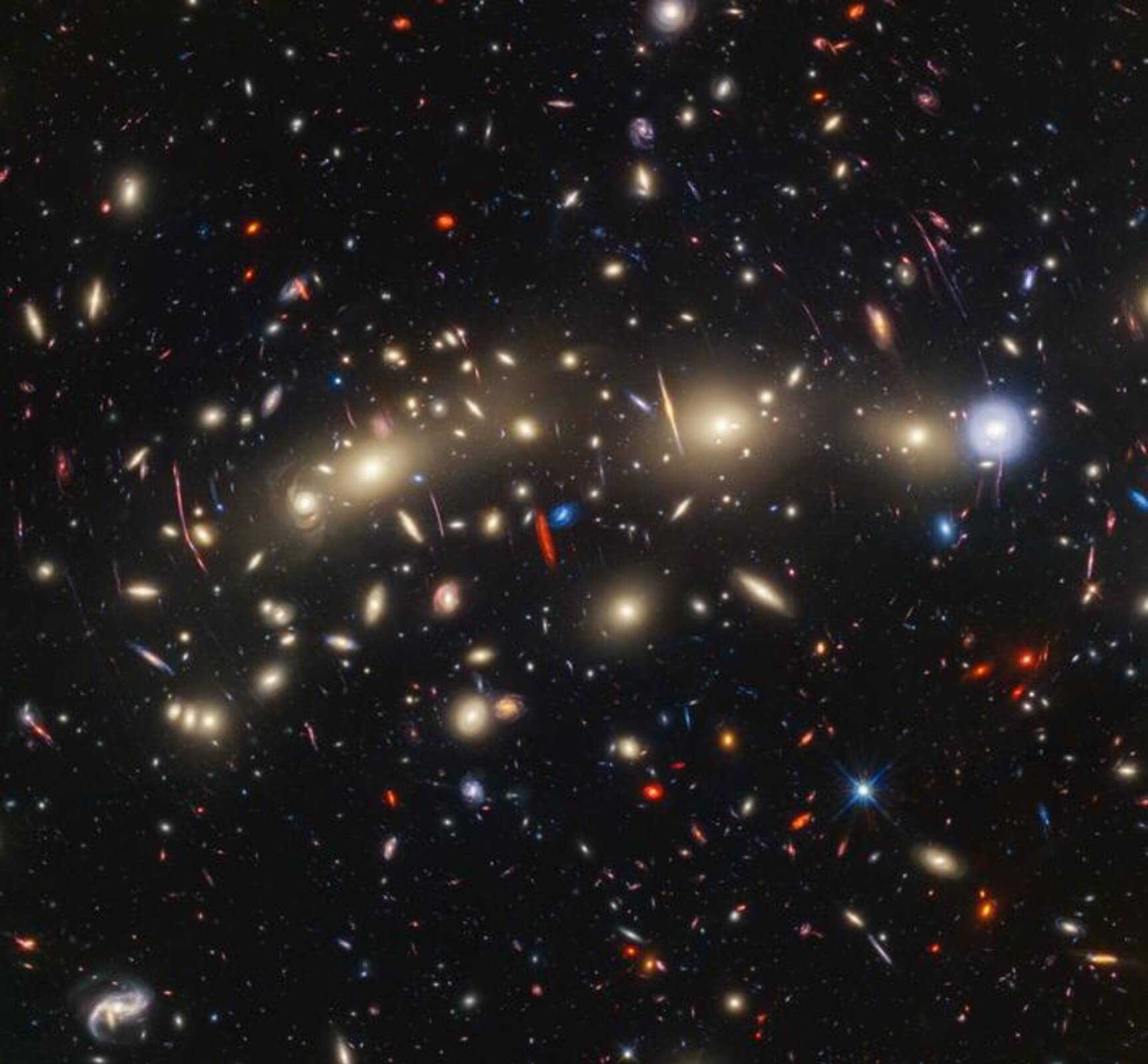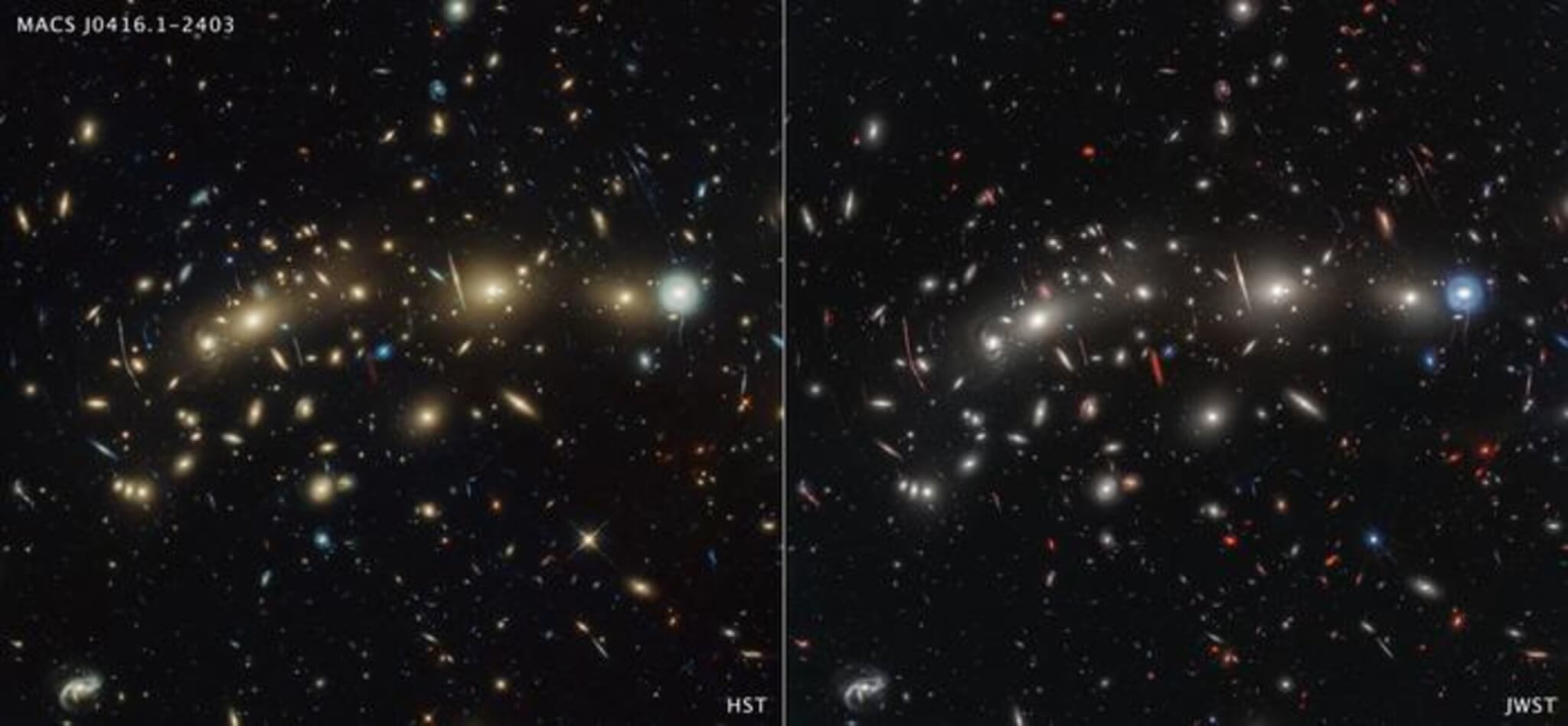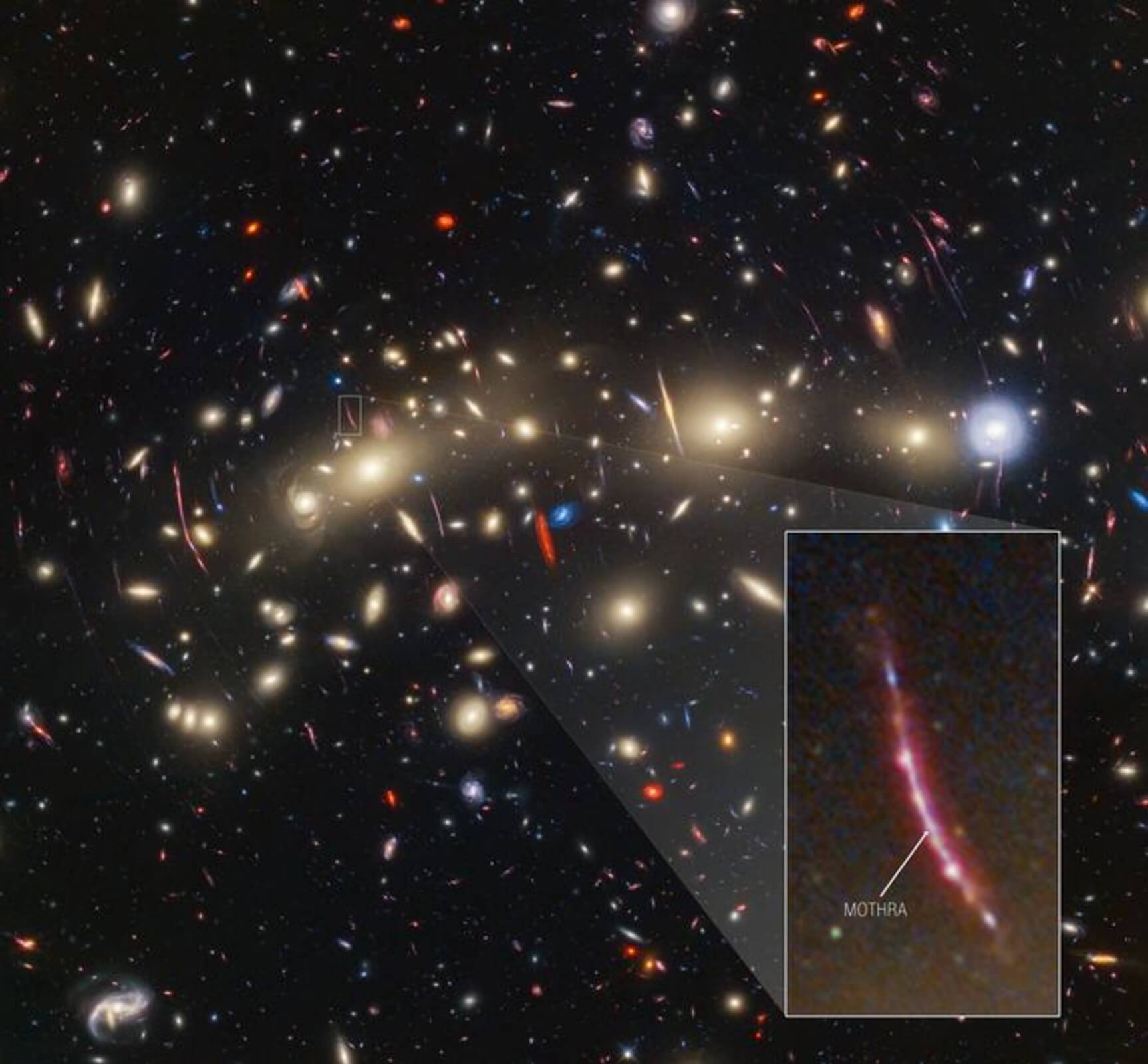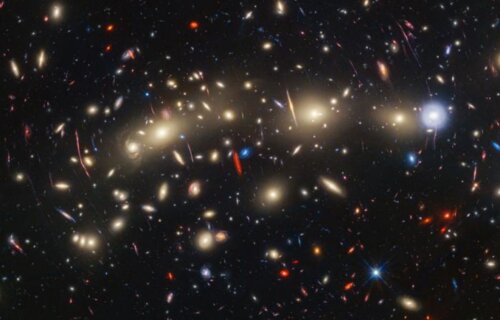WASHINGTON — NASA is handing out holiday presents early this year. With the season of giving approaching, it feels appropriate that astronomers have discovered the “Christmas Tree Galaxy Cluster,” located billions of light years away.
NASA’s James Webb Space Telescope and the Hubble Space Telescope have joined forces to capture a breathtaking image of the MACS0416 galaxy cluster, offering a comprehensive view of the universe. Located approximately 4.3 billion light-years away from Earth, MACS0416 consists of two colliding galaxy clusters that will eventually merge to form an even larger cluster.
The resulting image, which combines visible and infrared light, showcases a wealth of details that can only be revealed by harnessing the capabilities of both space telescopes. The image not only features a multitude of galaxies within the cluster but also presents sources that vary in brightness over time, likely due to gravitational lensing — a phenomenon in which light from distant background sources is distorted and amplified.

MACS0416 was the first subject of an ambitious and collaborative Hubble program known as the Frontier Fields, initiated in 2014. This program aimed to explore some of the faintest and youngest galaxies ever detected. JWST’s infrared observations have significantly enhanced this deep exploration, delving even further into the early universe.
“We are building on Hubble’s legacy by pushing to greater distances and fainter objects,” says Rogier Windhorst of Arizona State University, principal investigator of the PEARLS program (Prime Extragalactic Areas for Reionization and Lensing Science), which took the Webb observations, in a media release.
Decoding the Colors
To create the image, the shortest wavelengths of light were assigned the color blue, the longest wavelengths were represented as red, and intermediate wavelengths were rendered as green. This broad spectrum, ranging from 0.4 to 5 microns, provides a vivid tapestry of galaxies.
The colors offer valuable clues about the distances of galaxies: Blue galaxies are relatively nearby and often exhibit intense star formation, as best detected by Hubble, while red galaxies tend to be more distant, as identified by Webb. Some galaxies appear exceptionally red due to their abundance of cosmic dust, which absorbs bluer starlight.
“The whole picture doesn’t become clear until you combine Webb data with Hubble data,” notes Windhorst.
The Christmas Tree Galaxy Cluster
While the combined observations contribute to the image’s aesthetic appeal, they serve a specific scientific purpose. The research team combined three sets of observations, each taken weeks apart, with a fourth set from the CANUCS (CAnadian NIRISS Unbiased Cluster Survey) research team. The objective was to detect objects whose brightness varies over time, known as transients.
Scientists identified 14 transients across the field of view. Twelve of these were found within three galaxies highly magnified by gravitational lensing and likely represent individual stars or multiple-star systems temporarily undergoing significant magnification. The remaining two transients were located in moderately magnified background galaxies and are believed to be supernovae.

“We’re calling MACS0416 the Christmas Tree Galaxy Cluster, both because it’s so colorful and because of these flickering lights we find within it,” says study lead author Haojing Yan, from the University of Missouri in Columbia. “We can see transients everywhere.”
The detection of numerous transients within a relatively short time frame suggests that astronomers could discover even more in this cluster and similar ones through regular monitoring with the Webb Telescope.
A Remarkable Star System – ‘Mothra’
Among the identified transients, one-star system stood out. Located in a galaxy that existed approximately three billion years after the Big Bang, this star system was magnified by a factor of at least 4,000. The team humorously dubbed it “Mothra,” alluding to its extraordinary brightness and magnification, akin to the famous kaiju monsters in Japanese cinema.
What makes Mothra particularly intriguing is its visibility in Hubble observations taken nine years earlier. This is unusual, as maintaining the precise alignment required to magnify a star to such an extent should be highly improbable over such a long period.

The most plausible explanation is the presence of an additional object within the foreground galaxy cluster that further enhances the magnification. The team estimated the mass of this so-called “milli-lens” to be between 10,000 and one million times the mass of our Sun. However, the exact nature of this object remains a mystery.
“The most likely explanation is a globular star cluster that’s too faint for Webb to see directly,” says study lead Jose Diego, from the Instituto de Física de Cantabria in Spain. “But we don’t know the true nature of this additional lens yet.”
The James Webb Space Telescope data presented in this image was obtained as part of the PEARLS GTO program 1176.
The Yan study is published in The Astrophysical Journal, while the Diego study is published in the journal Astronomy & Astrophysics.
You might also be interested in:
- JWST teams with Chandra telescope to unveil spectacular new images of the universe
- Space record: Hubble Telescope spots oldest star ever detected — 13 billion light years away!
- Best Of The Best Telescopes For Beginners In 2023: Top 5 Stargazers Most Recommended By Experts

